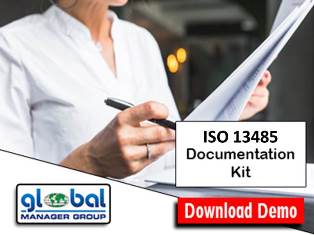The latest version of ISO 13485 was published in 2016, and the transition from the previous version is ahead. One of the most important steps in the transition process, as well as in the initial implementation, is determining what documents and records are needed for an effective Quality Management System (QMS) based on ISO 13485.
The key sections of ISO 13485 set out a range of document requirements for developing, implementing, and maintaining a Quality management system tailored to the design and production of medical devices.
Requirements of Documents for ISO 1345 Certification
- Quality Manual :
The ISO 13485 quality manual is a mandatory document for ISO 13485 Certification, which maintains quality management system in medical devices. This is a roof document for QMS, and it usually includes the QMS scope, role(s) undertaken by the organization, exclusions from the standard, references to relevant documents, and the business process model.
- ISO 1345 Quality System Procedures :
ISO 13485 procedures documentsrequired as necessary for effective planning, operation, control and monitoring of realization processes improvements. Mandatory procedures cover all the clause requirements to follow while implementation of Quality management system for preparing and maintaining medical devices.
- ISO 13485 Exhibits :
ISO 13485 exhibits documents are very useful tools that cover all the details for training to the user to implement the processes and get detail ideas for process implementation and improvement.
- ISO 13485 Formats :
ISO 13485 formats documents designed and required to maintain records as well as establish control and make system in the organization. The ISO 13485 samples formats given are as a guide and not compulsory to follow and organization is free to change the same to suit own requirements.
- ISO 13485 SOPs :
ISO 13485 SOPs documents cover sample copy of work instructions to link with significant aspects issues in the organization. It takes care of all such issues and used as a training guide as well as to establish control and make system in the organization. The samples given are as a guide and not compulsory to follow and organization is free to change the same to suit own requirements.
- ISO 13485 Audit Checklist
ISO 13485 audit checklist documents audit questions based on ISO 13485:2003 requirements as well as for Clause wise questions and department wise question. It will be very good tool for the auditors to make audit Questionnaire / clause wise audit Questionnaire while auditing and make effectiveness


 The purpose of
The purpose of  The Standard Operating Procedure (SOP) describes the process on how to write SOPs. Standard Operating Procedures (SOPs) must be written, approved and followed for any routine operation, activity or task that may impact the safety, quality, purity and efficacy or distribution of medical devices to ensure consistent application and meet regulatory compliance. The purpose of this Standard Operating Procedure (SOP) is to standardize and systematize the creation, revising, approving and issuing of Standard Operating Procedures.
The Standard Operating Procedure (SOP) describes the process on how to write SOPs. Standard Operating Procedures (SOPs) must be written, approved and followed for any routine operation, activity or task that may impact the safety, quality, purity and efficacy or distribution of medical devices to ensure consistent application and meet regulatory compliance. The purpose of this Standard Operating Procedure (SOP) is to standardize and systematize the creation, revising, approving and issuing of Standard Operating Procedures. ISO 13485 Manual
ISO 13485 Manual

